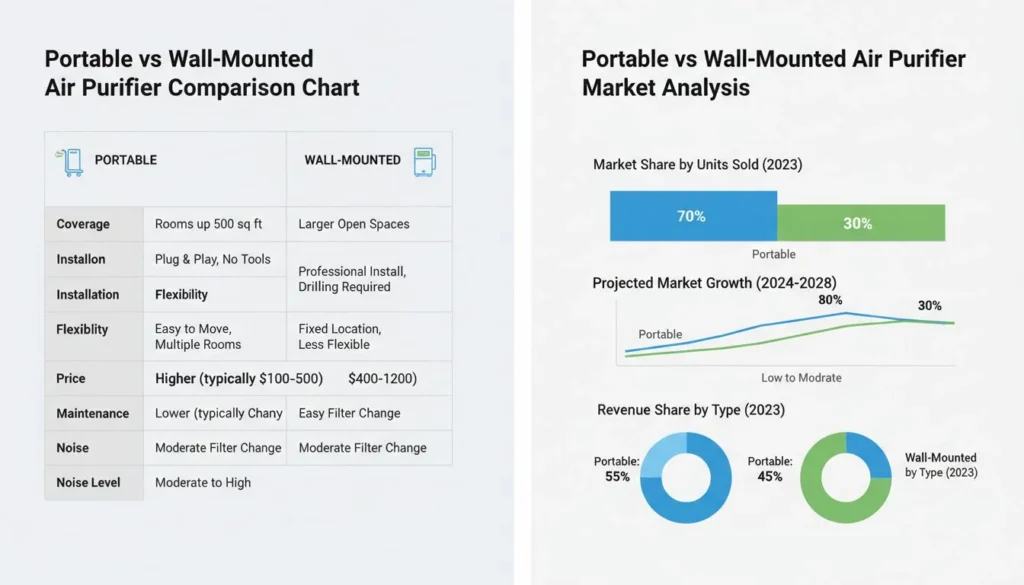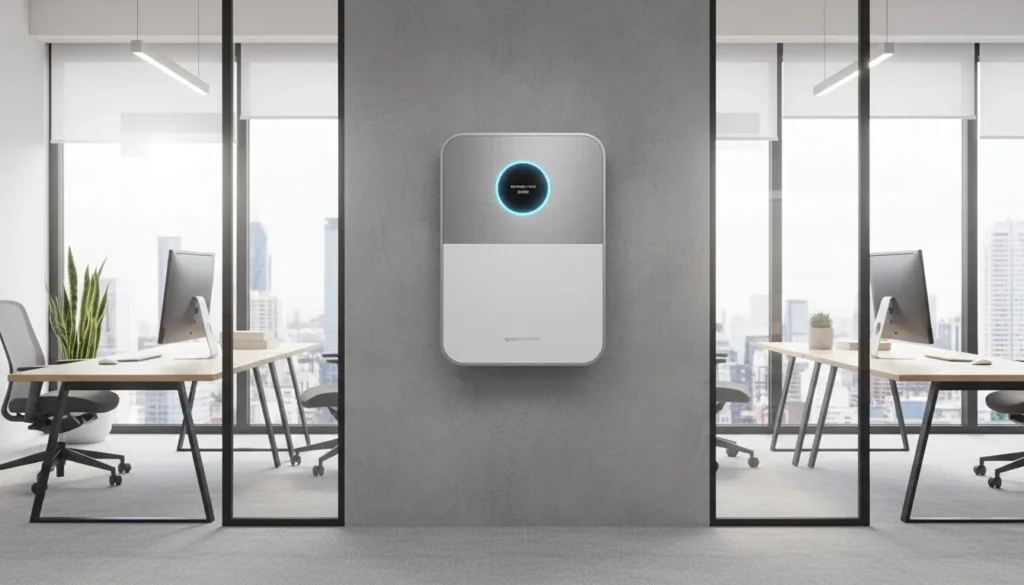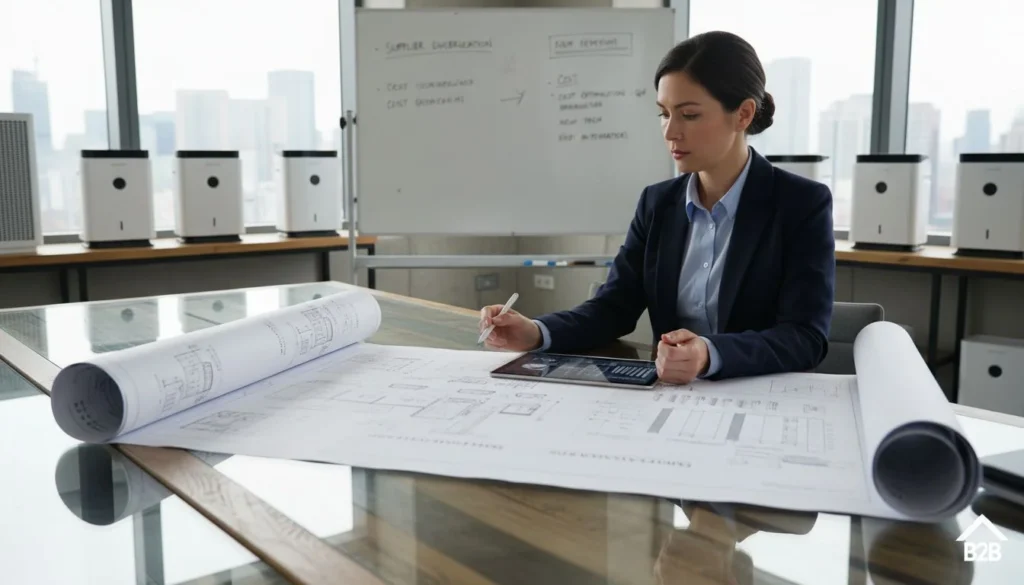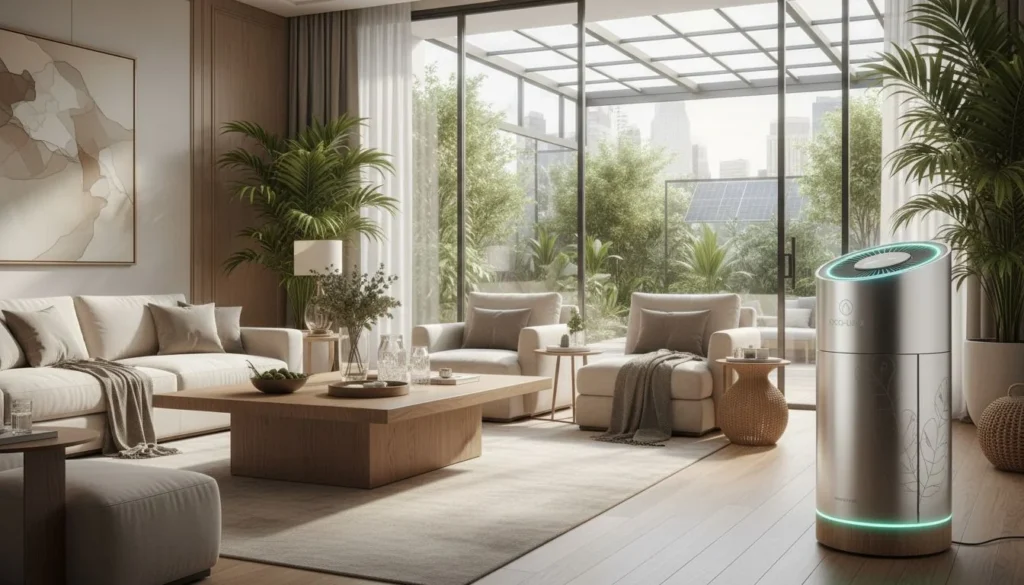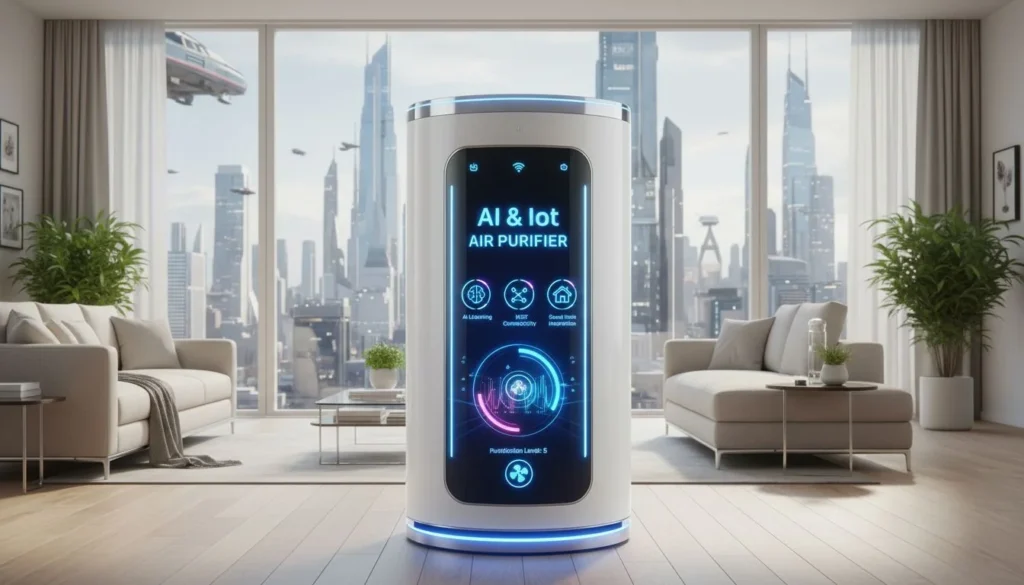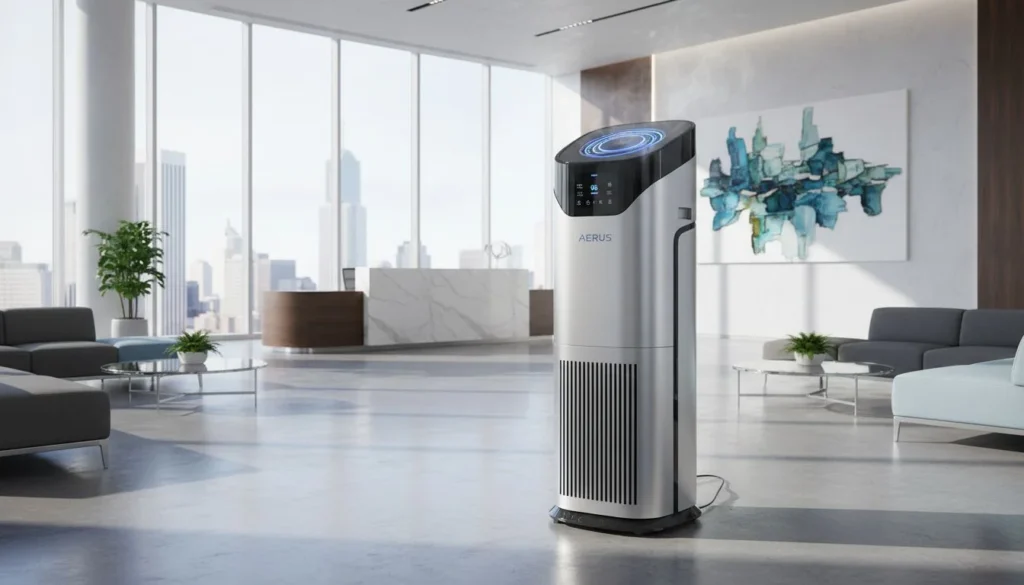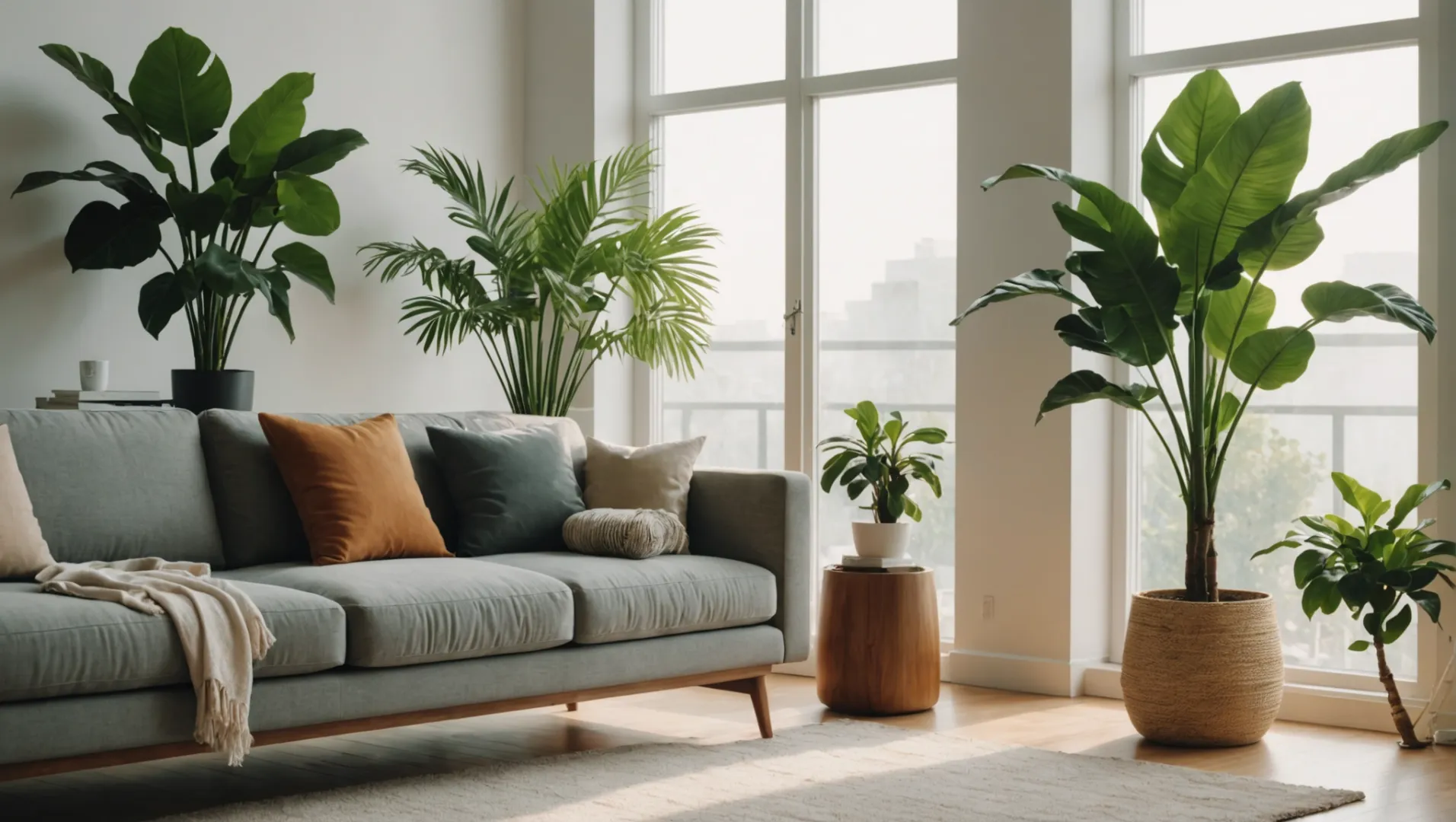
ご家庭のホコリ対策に空気清浄機をお考えですか?空気清浄機の謎を解き明かし、本当に空気をきれいにするという約束を果たしてくれるのか、一緒に考えてみましょう!
空気清浄機、特にトゥルー ヘパ は、0.3ミクロンの粒子を99.97%捕集し、ホコリを低減する高い効果を発揮します。そのため、室内の空気の質を改善するための優れた選択肢となります。
空気清浄機の効果は期待できるが、さまざまなモデルや技術のニュアンスを理解することは非常に重要だ。このブログでは、空気清浄機の仕組みやメリット、購入前に考慮すべき点についてご紹介します。
真のHEPAフィルターは、0.3ミクロンの粒子を99.97%捕集します。真
トゥルーHEPAフィルターは、0.3ミクロンの粒子を高効率で捕捉するように設計されています。
何が真をなすのか ヘパ フィルターが効果的?
真 ヘパ フィルターは、0.3ミクロンの浮遊粒子を99.97%捕捉する能力で有名ですが、この効率は一体何に起因しているのでしょうか?
真 ヘパ フィルターは高密度の繊維構造で、ほこり、花粉、煙などの小さな粒子を捕捉する能力があるため効果的です。第三者機関によってテストされ、0.3ミクロン以上の粒子に対して99.97%のろ過効率を保証し、空気の質を大幅に改善することで健康を守ります。
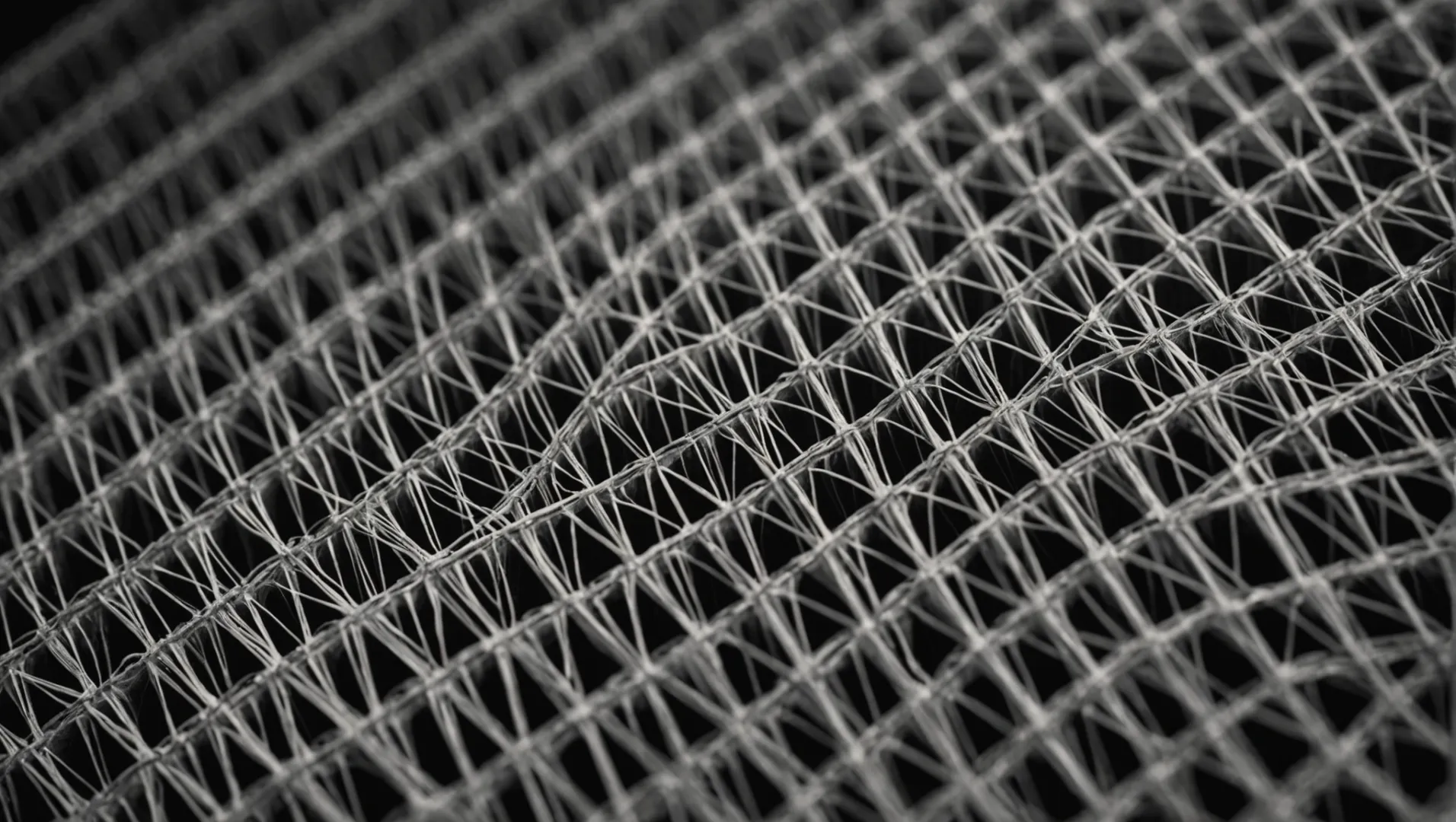
真のメカニズムを理解する ヘパ フィルター
を効率化するカギとなる。 真 ヘパ フィルター1 その複雑な設計にある。これらのフィルターは、繊維が密に詰まった層で構成されており、拡散、遮断、衝突によって粒子を捕捉するように設計されたマットを作り出している。
- 拡散: 小さな粒子が気体分子と衝突し、その不規則な動きによって繊維の中に閉じ込められる。
- インターセプト: 気流は粒子を繊維の近くまで運び、繊維に付着させる。
- インパクション: 直進する大きな粒子は繊維に直接衝突し、捕捉される。
この多面的なアプローチにより、トゥルーは ヘパ ホコリ、花粉、カビの胞子、煙などの微小粒子を捕らえるフィルター。
実際のアプリケーションと利点
が発生しやすい環境では 山火事2米国の一部など。 ヘパ フィルターが重要な役割を果たしている。通常1ミクロン以下の煙の粒子を空気中から効果的に取り除くことができる。窓を閉め、高性能のトゥルー ヘパ 空気清浄機をターボモードで少なくとも1時間使用すれば、大幅な空気交換が可能になり、室内の空気の質が向上します。
| 特徴 | 真 ヘパ フィルター効果 |
|---|---|
| 粒子径除去 | 0.3ミクロン以上を捕捉 |
| ろ過効率 | 99.97% |
| 一般的な用途 | アレルギー、煙、ほこりの低減 |
| 健康上のメリット | 呼吸器疾患のリスクを低減 |
他の技術との比較
UVライトやイオナイザーなどのテクノロジーは存在するが、トゥルーの効果には及ばない。 ヘパ フィルターは粒子を捕捉する。UVライトはバクテリアやウイルスを殺すことに重点を置いているのに対し、イオナイザーは粒子を帯電させることで機能する。しかし、これらの技術は、すべての空気中の汚染物質を効率的に捕捉できるわけではない。
ホコリアレルギーに悩まされている人や、空気の質の悪い地域に住んでいる人には、True. ヘパ 空気清浄機は、その優れた性能から、しばしば他の選択肢よりも推奨される。 除塵3 の能力がある。
真のHEPAフィルターは、0.3ミクロンの粒子を99.97%捕集します。真
真のHEPAフィルターは、99.97%の粒子を確実に捕獲するようテストされています。
UVライトはHEPAフィルターよりも除塵効果が高い。偽
HEPAフィルターは、紫外線よりも塵埃を捕らえる効果が高い。
空気清浄機はアレルギーや呼吸器の問題に役立つか?
ご家庭でアレルギーや呼吸器の問題にお悩みですか?空気清浄機があなたの呼吸を楽にする解決策になるかどうか確かめてください。
空気清浄機、特にトゥルー ヘパ フィルターは、0.3ミクロンのアレルゲンや汚染物質を捕捉することで、アレルギーや呼吸器系の問題を大幅に軽減します。
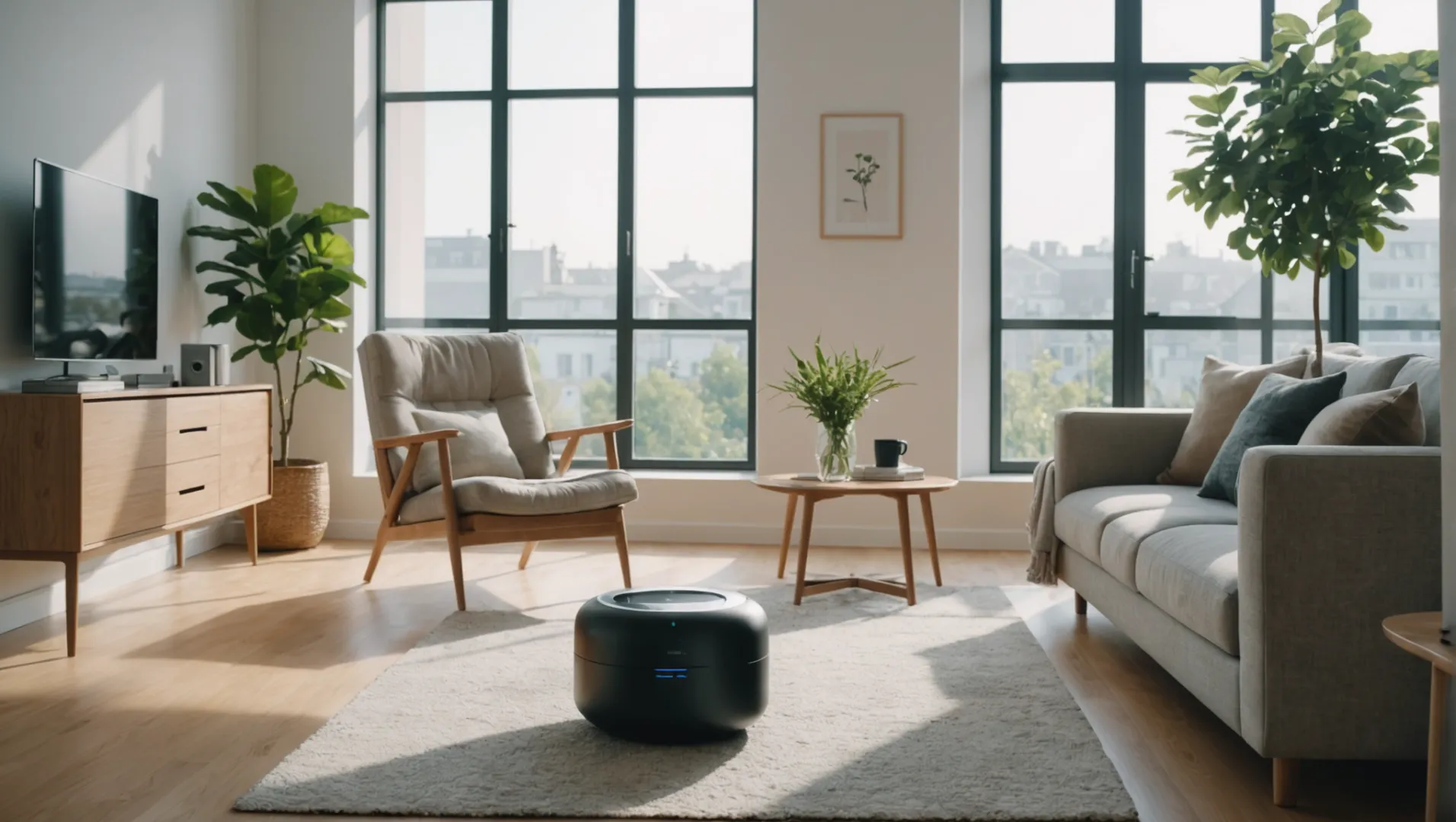
空気中のアレルゲンとその影響を理解する
ダニ、花粉、ペットのフケ、カビの胞子などのアレルゲンは、アレルギーや呼吸器系の問題を引き起こす一般的な室内空気汚染物質です。これらの粒子は、くしゃみ、鼻づまり、咳、さらには喘息発作などの症状を引き起こす可能性があります。空気清浄機 真 ヘパ フィルター4 は、このような小さな刺激物を捕獲し、生活空間での存在感を減らすように設計されています。
いかに真実か ヘパ フィルター作業
真 ヘパ フィルターは空気中の微粒子を非常に効率よく捕集します。0.3ミクロンの微粒子を99.97%まで捕集できるため、アレルギーをお持ちの方に特に効果的です。正しく使用すれば、空気中のアレルゲン濃度を大幅に下げることができるため、アレルギー症状を最小限に抑えることができます。
空気清浄機が呼吸器の健康にもたらすメリット
喘息や慢性閉塞性肺疾患などの呼吸器疾患を患っている方慢性閉塞性肺疾患)、きれいな空気を維持することは非常に重要である。有害な汚染物質を除去することで、空気清浄機はこれらの症状の悪化を防ぐことができる。こんな時 山火事シーズン5煙やその他の汚染物質が激増する今、空気清浄機は呼吸器の健康を守る重要なツールとなる。
空気清浄機の追加技術
真である間 ヘパ がゴールド・スタンダードだが、空気清浄機の中には、活性炭フィルター、UVライト、イオナイザーなど、空気の質をさらに向上させる追加技術を組み込んだものもある。これらの機能は、臭いの中和やバクテリアやウィルスの死滅に役立ち、重度のアレルギーや呼吸器系の問題を抱える人々により包括的なソリューションを提供する。
最適な使用のためのヒント
空気清浄機のメリットを最大限に生かすために、以下のヒントを参考にしてください:
- プレースメント:寝室やリビングルームなど、最も長く過ごす場所に設置してください。
- 定期メンテナンス:フィルターをメーカーの指示に従って清掃または交換し、効率を確保する。
- 部屋の大きさ:最適な性能を発揮するために、お部屋のサイズに合ったモデルをお選びください。
さまざまなタイプの空気清浄機がどのように機能し、どのような利点があるのかを理解することで、ご自身のニーズに最も適した、室内の空気の質を向上させるための情報を得た上で決断することができます。
真のHEPAフィルターは99.97%の粒子を捕集します。真
真のHEPAフィルターは、0.3ミクロンの微粒子を捕捉するように設計されています。
空気清浄機は、室内のあらゆるアレルゲンを除去する。偽
空気清浄機は効果的ではあるが、すべてのアレルゲンを100%除去することはできない。
山火事の季節、空気清浄機の性能は?
山火事は、煙と微粒子の危険な混合物を放出する。そのような時に空気清浄機は役に立つのだろうか?
空気清浄機 ヘパ フィルターは山火事の季節に効果を発揮し、煙の粒子を捕捉して室内の空気の質を大幅に改善します。被災地で継続的に稼働させることで、有害な汚染物質にさらされる機会を減らすことができる。
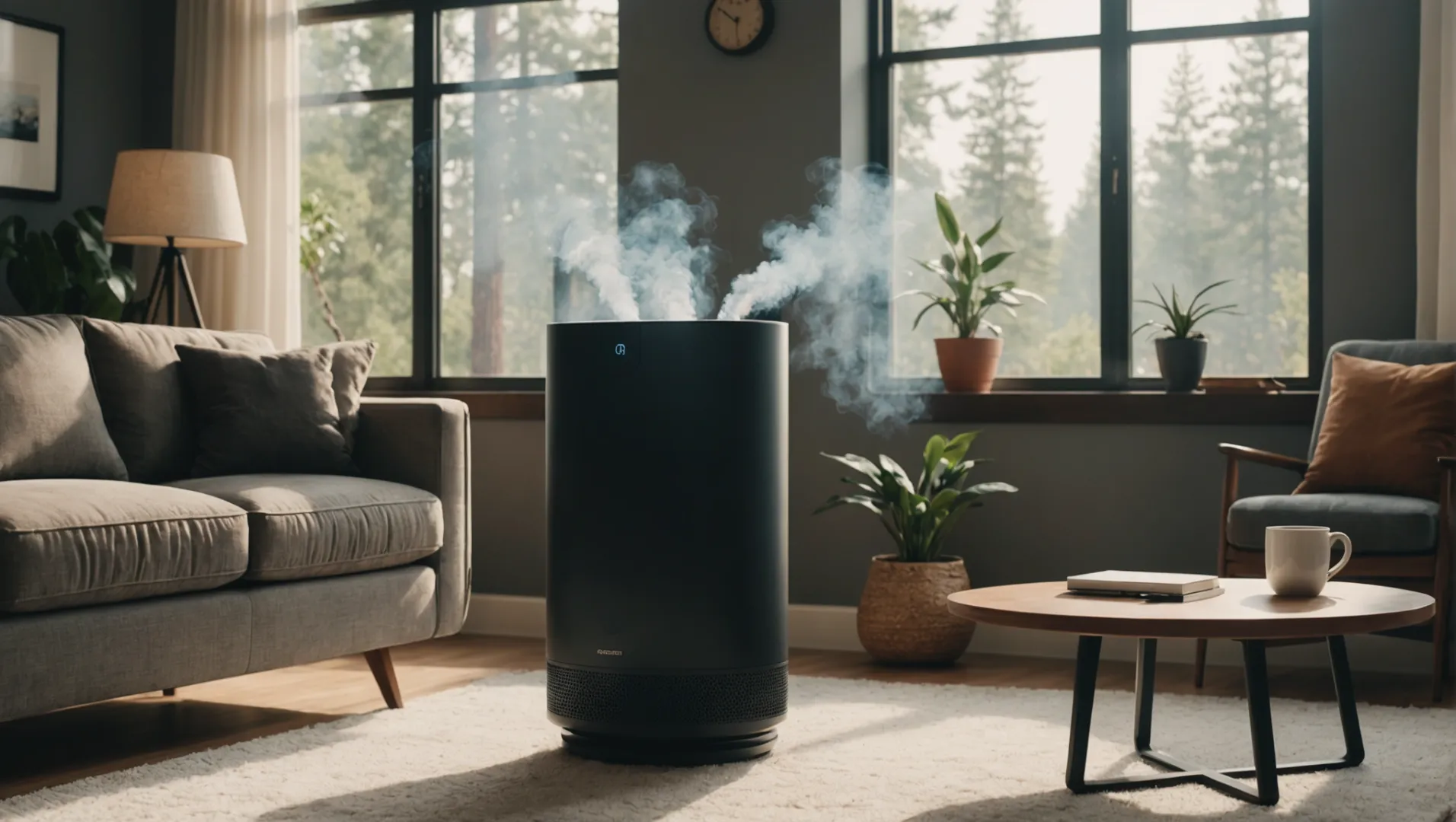
山火事の煙の影響を理解する
山火事は、微小粒子状物質(PM2.5)、一酸化炭素、揮発性有機化合物(VOC)などの有害物質のカクテルを発生させる。これらの汚染物質は肺の奥深くまで浸透し、呼吸器系の状態を悪化させる。このようなイベントの間、屋外の空気の質は悪化し、屋内環境にも影響を及ぼす。
真の役割 ヘパ フィルター
真 ヘパ 0.3ミクロンの微粒子を99.97%捕集する認定を受けたフィルターは、山火事の煙に対応するのに理想的です。煙を構成する小さな粒子を効果的に捕捉し、室内の空気の質を大幅に向上させます。煙だけでなく、ホコリやアレルゲンも除去します。
山火事時の空気清浄機使用の最適化
- 配置だ: 空気清浄機を、あなたが最も長く過ごす部屋に設置する。
- モードだ: 迅速な空気清浄にはターボまたは高性能モードを使用します。
- 期間 特に、大気質指標で汚染レベルが上昇している場合は、清浄機を連続運転する。
- シーリング: 屋外の煙が家に侵入するのを防ぐため、窓やドアは閉めておく。
| モード | 空気交換率 | 推奨使用法 |
|---|---|---|
| ターボ | 5~6回/時 | 汚染ピーク時 |
| ノーマル | 3~4回/時間 | 空気の質を維持するための定期的な使用 |
制限とその他の考慮事項
真である間 ヘパ フィルターは非常に効果的ですが、一酸化炭素のようなガスは除去できないので注意が必要です。包括的な保護のためには、臭いやガス状汚染物質を吸収する活性炭フィルターを含むモデルを検討してください。また、最適な性能を確保するためには、フィルターの定期的なメンテナンスが重要です。
真の効果 ヘパ 煙ろ過6:山火事の季節になぜこのフィルターが好まれるのか、さらに深く掘り下げてみよう。
空気浄化の代替技術7:UVライトやイオナイザーのような他の技術と、煙やホコリに対する有効性を探る。
についての情報収集 地域の大気質指標8 空気清浄機を作動させるタイミングを決定し、最大限の効果が得られるように設定を調整するのに役立ちます。
真のHEPAフィルターは煙の粒子を99.97%除去します。真
真のHEPAフィルターは、煙を含む0.3ミクロンの粒子を捕集します。
空気清浄機は山火事の煙による一酸化炭素を除去することができる。偽
HEPAフィルターではガスは除去できないので、活性炭フィルターが必要だ。
代替案はあるのか? ヘパ ホコリ対策に空気清浄機?
ヘパ 空気清浄機はホコリ対策で有名だが、他に有効な選択肢はあるのだろうか?
代替案 ヘパ 空気清浄機には、静電式空気清浄機、活性炭フィルター、イオナイザーなどがある。これらはホコリの減少を助けることができるが、真の空気清浄機と比べるとその効果は様々である。 ヘパ のモデルだ。

静電式空気清浄機の探求
静電空気清浄機は、帯電したプレートを使用して塵埃を捕捉します。このような装置は大きな粒子には効果的ですが、小さな粒子を捕捉する効率は真 ヘパ フィルターを使用している。これらのシステムのメンテナンスには、最適な性能を確保するためにプレートの頻繁な清掃が必要である。
活性炭フィルター
活性炭フィルターは、主に固形ダスト粒子よりも臭気やガスを除去することで知られている。しかし、全体的な空気の質を高めるために、他のろ過システムと組み合わせて使用されることが多い。活性炭フィルターは、他の方法と並行して補助的に使用することはできますが、それだけではホコリを大幅に除去するには不十分な場合があります。
イオナイザー長所と短所
イオナイザーは帯電したイオンを空気中に放出し、ほこりの粒子に付着させて地面に落ちるほど重くする。この方法で空気中のホコリを減らすことはできますが、環境から完全に粒子を取り除くことはできません。また、イオナイザーの中にはオゾンを発生させるものもあり、室内の空気の質を悪化させる懸念があります。
代替案の比較
| 方法 | 粉塵に対する効果 | その他の特典 |
|---|---|---|
| ヘパ 空気清浄機 | 高い | 小さな粒子に効果的 |
| 静電空気清浄機 | 中程度 | 定期的な清掃で費用対効果が高い |
| 活性炭フィルター | 低い | 消臭効果に優れる |
| イオナイザー | 可変 | 粉塵の低減に役立つが、オゾンを発生させる可能性がある |
代替案を検討する場合 真 ヘパ 空気清浄機9そのためには、空間の大きさや、臭いや化学物質の蒸気などの懸念事項など、具体的なニーズを評価することが不可欠です。複数の方法を組み合わせることで、室内の空気の質を改善する包括的なソリューションが得られるかもしれない。
静電式空気清浄機は、HEPAよりも小さな粒子を捕捉する。偽
静電クリーナーは、HEPAよりも小さな粒子には効果が低い。
イオナイザーはオゾンを発生させ、室内の空気の質に影響を与える可能性がある。真
イオナイザーの中にはオゾンを放出するものがあり、空気の質に影響を与えることがあります。
結論
よりきれいな空気を求めて旅をする中で、私は「真実の空気」を発見した。 ヘパ フィルターは、ホコリを減らし、室内の空気の質を改善するための強力なソリューションです。お住まいの環境や具体的なニーズに合わせて賢く選びましょう。
-
トゥルーHEPAフィルターがどのように機能するかについての詳細な洞察をご覧ください:高効率微粒子空気(HEPA)フィルターは、0.3ミクロン以下の空気中の微粒子を99.97%~99.99%除去することができます。 ↩
-
HEPAフィルターが煙の微粒子をどのように効果的に処理するのか..:HEPAエアフィルターは、そのサイズの粒子を空気から取り除くのに非常に優れています。 ↩
-
ホコリ対策に特化したトップクラスの空気清浄機を見つけよう:過去9年間に60台以上の空気清浄機をテストしてきましたが、その中でもカウエイAirmega AP-1512HH Mightyはトップ・ピックです。 ↩
-
トゥルーHEPAフィルターの効率と機能についてご紹介します:高効率微粒子空気(HEPA)フィルターは、0.3ミクロン以下の空気中の微粒子を99.97%~99.99%除去することができます。 ↩
-
煙と汚染物質が増加する中、空気清浄機がどのように機能するかを理解する:部屋用空気清浄機は、山火事の煙が発生している間、家の空気から微粒子を取り除くのに役立ちます。 ↩
-
真のHEPAフィルターが煙の粒子の捕獲に優れている理由を理解してください:そして、真のHEPAエアフィルターは、空気からそのサイズの粒子を除去するのに非常に優れています。私たちのトップピック、コーウェイAP-1512HHとほぼ... ↩
-
その他の空気浄化技術とその効果について..:積極的な浄化の例としては、イオン発生器、光触媒酸化、アクティブピュア独自の技術などがあります。 ↩
-
リアルタイムのデータにアクセスし、地域の大気の質を監視..:AirNow火災・煙マップには、何千もの常設PM2.5モニターからのデータに加え、何千もの大気質センサーからのクラウドソースデータが含まれています。 ↩
-
真のHEPAフィルターの効率と能力について知る:真のHEPAは長持ちし、1日24時間、1年365日作動します。ホコリ、ペットのフケ、花粉、カビ、バクテリア、...を効果的に除去できます。 ↩


